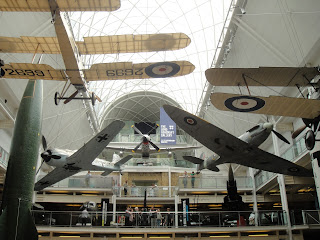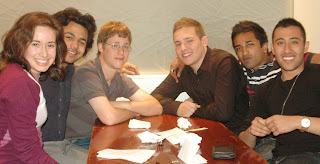It would be impossible to summarize what I have learned on this London adventure, but it would be wrong not to at least look back and diagnose some of the elements which - for better or for worse - made my experience what it was. In proper Type A form, I have decided to review these elements by dividing them into two lists.
What I will not miss:
- The food. There's a reason English food is known for being bad. Some of it is edible, sure, but you can only have so many fish and chips...
- The decorum. Being overly polite inhibits meaningful conversation, and prevents the kind of casualness that is conducive to, well, being friendly.
- The Tube. Not needing to take the Tube means I’m no longer living in a big, impersonal city, but rather a small town where you can walk five minutes to the farmer's market where you know the vendors personally!
- The weather. But then, who doesn't love a little sunshine?
- The education. I still hold that having fun is a far more effective way to learn.
- The accent. They can get away with so much just because they sound smart saying it! It's highly deceiving.
- The healthcare system. All free things come with a hidden cost. In this case, the system just isn't efficient.
- Starbucks. Of course they’re also in America, so technically I can't miss them, but I will especially not miss having to pay extra to sit inside and drink my coffee.
What I will miss:
- The food. Shopping for groceries was always a fun adventure, because they have different brands and flavors, like caramelized onion and balsamic vinegar chips.
- The decorum. A little politeness can go a long way toward adding dignity to your life.
- The Tube. I doubt I need to explain this one, as you all know how I feel about it by now.
- The weather. Besides reminding me of home in Washington, it can be nice to have variations in the weather.
- The education. Because of the sternness, I did learn a lot out of fear.
- The accent. Fine, it DOES sound nice.
- The healthcare system. I mean, it's free healthcare. Period.
- Starbucks. It came to represent a special zone of comfort, kind of like a US Embassy, where it was "American soil" in England. While I can go to Starbucks here, it won't represent that same special sense of security.
- The people. This is the one element not found on the previous list. More than anything about my study abroad experience, I will remember the people I met. No matter where they were from, or what very different beliefs they held, I will appreciate their friendship. When I arrived, I was scared because I felt so alone. But I left with the opposite problem - distress at leaving so many people. Which is, I suppose, a good problem to have.
Wherever you go, no matter how big and seemingly impersonal the place, you create a microcosm for your life. And the people you meet give value to the space you're in. You can adapt to any physical place, so it really doesn't matter where you go, but who you're with. And that, above anything else, is the most important lesson I have learned while living abroad.
 |
| So many smiling faces! A few of the folks who made Campbell House a home. |




















































